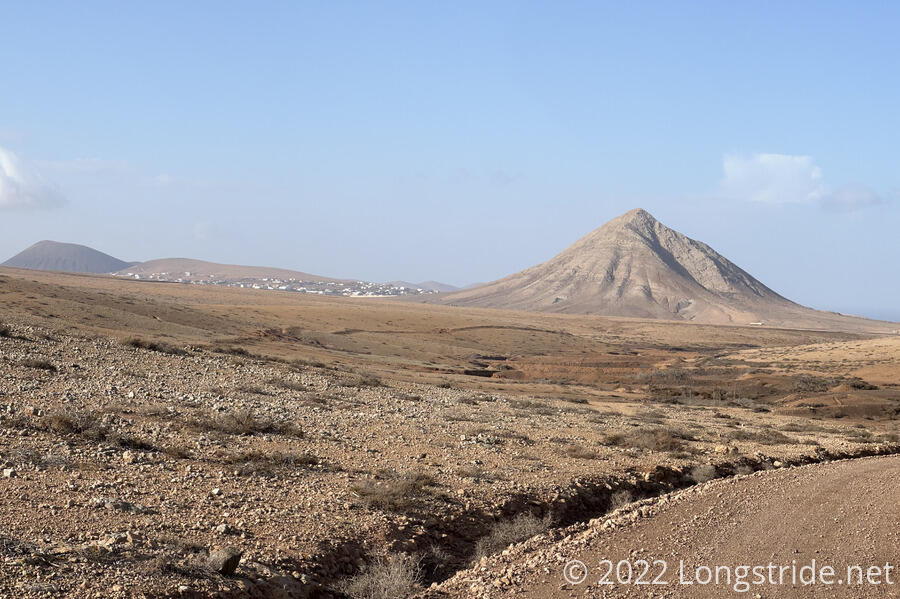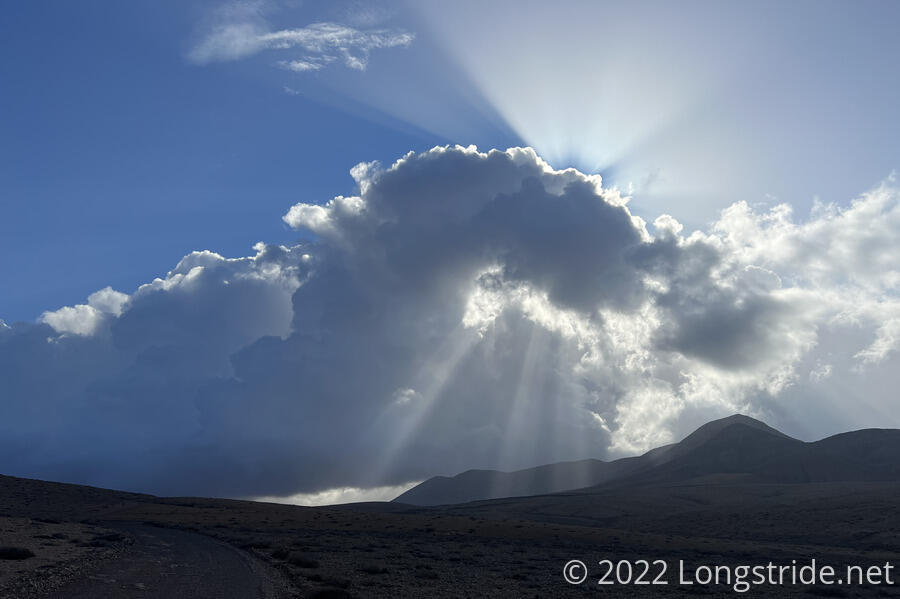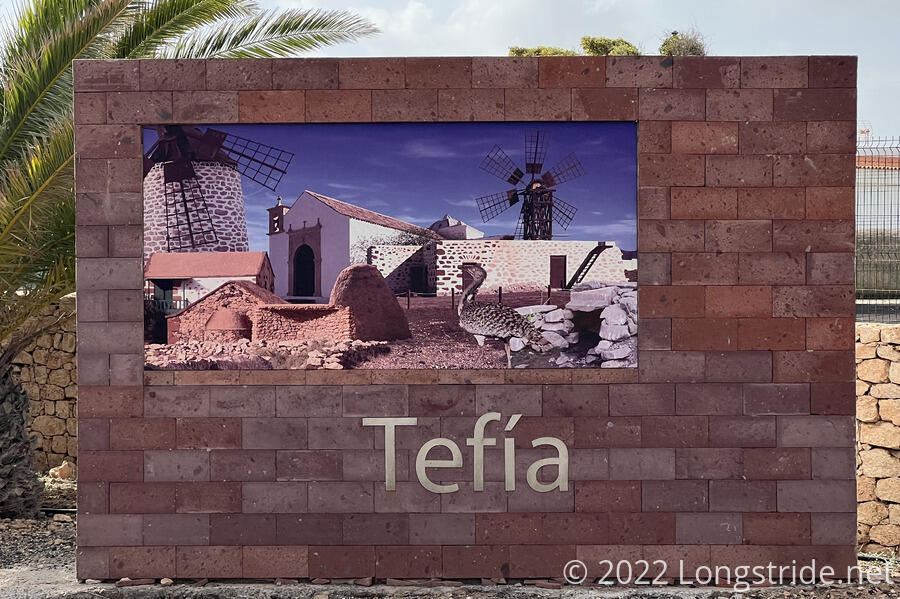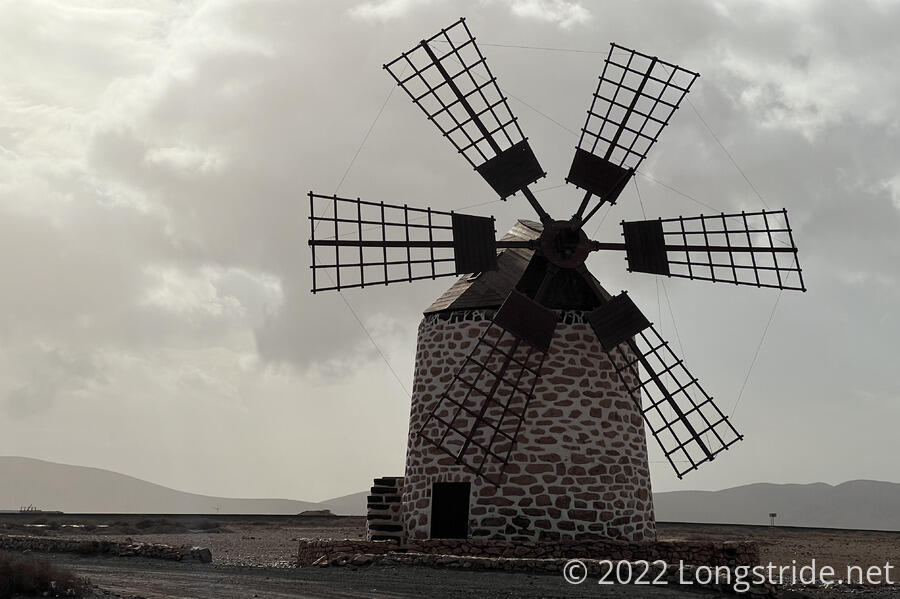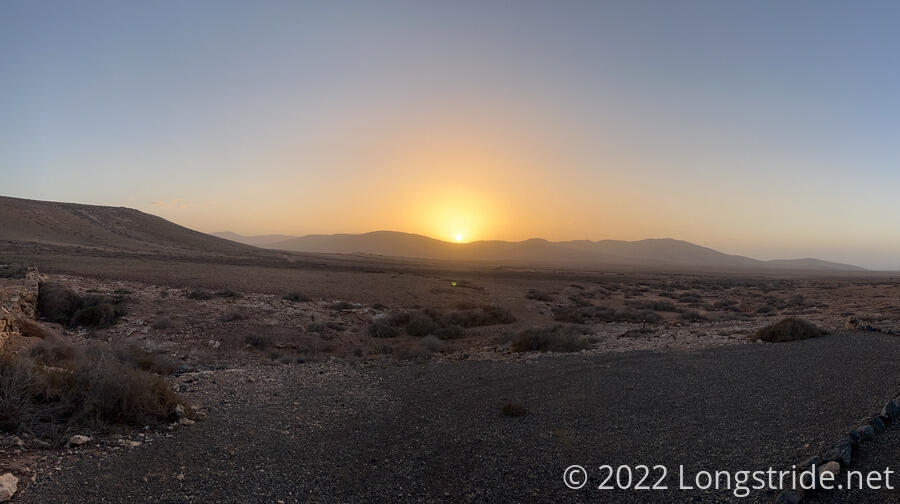Our second day in Fuerteventura took us past sacred mountains and small towns, as we hiked towards the interior of the island.
CareFree and I had originally decided to leave Corralejo today at 8, but since we didn’t have any time pressure for this evening, we opted to leave at 9 today, making it back to La Oliva and starting our hike to Tefía a little after 9:30.
Shortly south of La Oliva, as we headed into a valley, Montaña de Tindaya came into view, along with its neighboring town, Tindaya. The mountain, nearly pyramidal in shape, rises from the middle of a valley and was considered sacred by the aboriginal natives of Fuerteventura, who carved hundreds of footprints into the rock at the summit. Unfortunately (or fortunately, depending on how you look at it), access to the mountain is restricted, to help protect the carvings and other archeological artifacts on the mountain. As we got closer to the mountain, signs warned against approaching the mountain without permission.
It would have been nice to summit and see the artifacts there, but it would have been a quite long detour, and we weren’t going to climb a forbidden mountain.
As we made our way towards and past Montaña de Tindaya, rainclouds approached from the north. Fortunately for us, they seemed to be hugging the line of mountains on the east of the valley, which kept the rain away from us, for the time being — we’d be turning in that direction once we passed the mountain to go through the town.
As we made our way further down the valley, in the distance, a herd of goats was released from their pen, flooding out into a larger grazing area, and making a bit of ruckus as they did so. Goats being goats, two of them found places atop bales of hay.
Around 11:30, we reached the town of Tindaya, and stopped at a restaurant for ice cream and something to drink, to supplement the water we’re carrying. While there, we finally met a Swede we’d seen at bus stations the last several days. He’d started two days before us, and we started seeing him on Lanzarote after we’d caught up by doubling up on shorter sections from the guidebook. Then the rain caught up with us, and we moved inside to finish our drinks (and enjoy the wifi) until the rain ended.
About half an hour outside of Tindaya, we stopped on the side of the road for a break, and to have a proper lunch.
The trail took us on road (mostly dirt, some paved) for the entirety of the day, and it allowed us to make relatively fast progress, though it also meant that occasionally, the scenery was somewhat lacking, especially since another calima (sand carried on the wind from the Sahara) seemed to be moving in; the sky in the distance started to seem more hazy than it had been.
Along the dirt road, we passed a garden center (in big white English letters). A cactus on an old boat served as an eye catch for those approaching.
The road led us to Tefía. Near the center of town, a large sign with the town’s name had a mural with a collage of scenes around town, including a weird bird staring at you with one eye.
In Tefía, the trail brought us to a restaurant, and we stopped for lunch, again joining the Swede we met earlier in the day for a longer conversation.
One of the nice things about the GR131 is that the trail goes through so many (small) towns, all of which so far have had a restaurant and/or small grocery store, making it far easier than we had expected to get food (and a large variety, too) with daily small resupplies, rather than larger multi-day resupplies that result in a far heavier pack.
Leaving Tefía brought us past a chapel originally constructed in the early 1700s, and through the Ecomuseo La Alcogida, a reconstructed historic farming village showing how homes and farming looked in the past. An old windmill stood near the end of the museum, as we headed off down a dusty dirt road.
We passed another semicircular shelter, and stopped there for the evening, making a dinner of snacks since we had a late lunch (or early dinner) in town.
A smoky smell filled the air, and we noticed it had gradually become more hazy. A pair of horseback riders, one of which seemed to be getting riding lessons, passed us twice, once before sunset and once after.
Tomorrow: We pass Betancuria, one of the oldest settlements in the Canary Islands, and make our way to Pájara.
